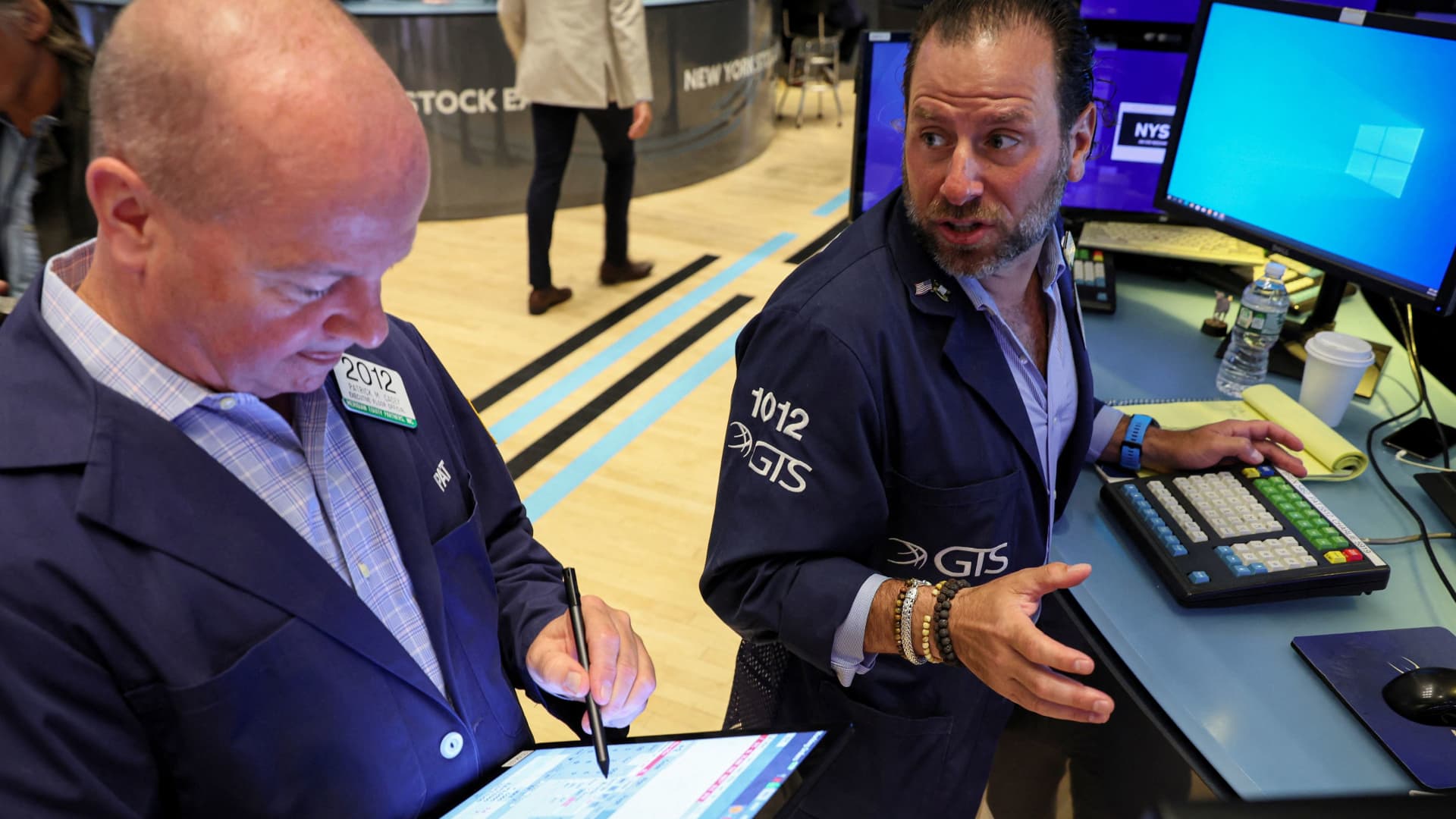
A trader works on the floor of the New York Stock Exchange (NYSE), June 27, 2022.
Brendan McDermid | Reuters
The first half of 2022 was historically dismal for global stock markets, and strategists think there are dark clouds on the horizon and some way to go before the storm blows over.
The S&P 500 closed out its largest first-half decline since 1970 last week, down 20.6% since the turn of the year. The pan-European Stoxx 600 ended the half down 16.6% and the MSCI World dropped 18%.
A range of other asset classes also saw significant losses, including bonds. The traditional “safe haven” U.S. dollar and certain commodities, such as oil, were among the few exceptions to an otherwise ugly six months.
Jim Reid, head of global fundamental credit strategy at Deutsche Bank, said in a daily research note Friday that for investors, “the good news is that H1 is now over, the bad news is that the outlook for H2 is not looking good.”
That said, U.S. stocks managed a rally as the second half got underway on Friday, and European markets had a positive day on Monday (a U.S. holiday).
However, the macroeconomic outlook remains uniquely uncertain as the war in Ukraine and inflationary pressures persist, prompting central banks to embark on aggressive monetary policy tightening and exacerbating fears of a global economic slowdown.
The ‘economic regime is shifting’
In a mid-year outlook report seen by CNBC, HSBC Asset Management advised investors that the “economic regime appears to be shifting” as adverse supply shocks persist, globalization slows and commodity prices remain “secularly high.” And all of this while governments attempt to manage the “transition risks” of changes in climate policy.
HSBC’s Global Chief Strategist Joe Little called the end of an era of what economists dubbed “secular stagnation,” characterized by historically low inflation and interest rates. From here on, he forecast more persistent high inflation, higher interest rates and more volatile economic cycles.
“Many of the tailwinds for investment markets are now becoming headwinds. That points to a phase of ongoing market turbulence. Investors will need to be realistic about return expectations, and they will need to think harder about diversification and portfolio resilience,” Little said.
The emerging structural themes of deglobalization, climate policy and a commodity super-cycle will drive more persistent inflation across major economies. Although HSBC expects inflation to gradually cool off from its current multi-decade highs in many economies, Little said the “new norm” is likely to be steeper price increases in the medium term, leading to a phase of higher interest rates.
To navigate this new era, Little suggested that investors look for greater geographical diversification, highlighting Asian asset classes and credit markets as “attractive income enhancers.”
“Real assets and other ‘new diversifiers’ can help us build resilience into portfolios. There is also a place for conviction investing and thematic strategies, where we can identify credible mega-trends at reasonable prices,” he added.
‘Headed in the wrong direction’
Dave Pierce, director at Utah-based Strategic Initiatives, told CNBC on Friday that the macro forces at play meant markets were still “headed in the wrong direction.” He stressed that inflation had not yet peaked and there was no apparent catalyst for oil prices to return to ground.
He added that unless there is a resolution to the war in Ukraine or oil companies are able to ramp up production – which he suggested would take at least six months and would run the risk of the bottom falling out of the oil market if Russian supply returns – the price pressures that have driven central banks toward drastic action show no sign of abating.
Stock valuations have come down markedly from their late-2021 peaks, and Pierce acknowledged that they are “more enticing” than they were a few months ago, but he is still holding off on re-entering equity market positions.
“I’m not putting all my eggs back into the markets right now, because I think that we’ve still got a ways to go. I think there are going to be some additional retracements that we’re going to have in the marketplace, and I think that is probably necessary,” he said.
“When you have interest rates doing what they are, it’s really hard to keep things stable and working and going one direction.”
Pierce added that the correction seen in recent months was not surprising given the “times of plenty” enjoyed by markets during the rebound from the initial Covid-19 crash to record highs late last year.
In terms of sector allocation, Pierce said he has directed his attention toward commodities and “necessities,” such as health care, food and essential clothing.
Recession risks, but scope for improvement
Although the investing landscape looks somewhat perilous, HSBC’s Little suggested there is room for better performance later in 2022 if inflation cools and central banks are able to adopt a more “balanced” stance.
The bank’s asset management strategists believe we are now at or close to “peak pain” on inflation, but the data will not decline meaningfully until late in the year. Little said his team is watching wage data closely for signs of inflation becoming entrenched.
A hawkish monetary policy shift triggering a recession remains the biggest threat to this outlook, Little suggested, but the precise scenario varies by geography.
“With the global economy now at a fairly late stage of the cycle, we are seeing more divergence between regions. For now, the outlook seems most precarious for Europe and parts of emerging market (EM),” he said.
In light of recent market moves, Little identified bond valuations as more attractive, and said selective income opportunities were emerging across global fixed income, particularly credits.
“We favor short-duration credit allocations, on a selective basis in Europe and Asia. Within equities, we also want to be more selective. We continue with a focus on value and defensives but we remain alert to the possibility of another style rotation, should bonds stabilize,” Little said.




